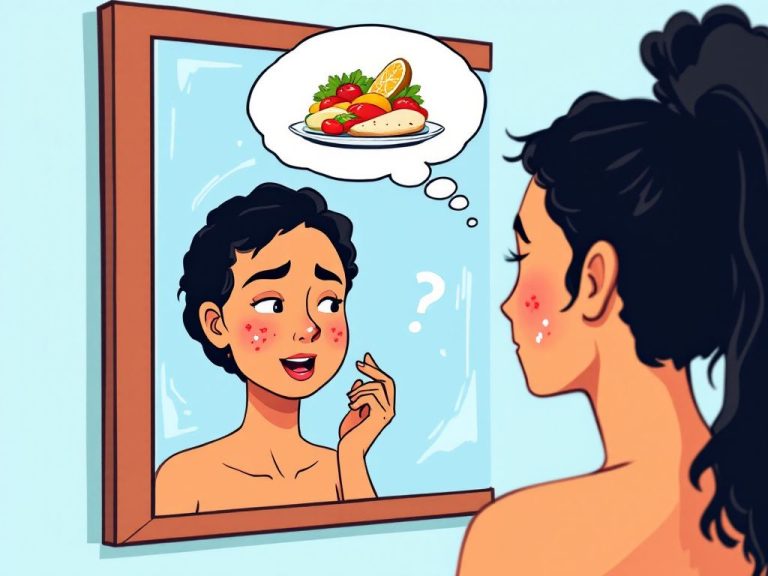Hey there! Let’s dive into a topic that’s all too familiar—and perhaps frustrating—for many: **resistant acne**. You wash your face regularly, eat healthily, and avoid touching your face, yet those stubborn pimples still persist. It feels like fighting an uphill battle, doesn’t it?
Let’s take a closer look at understanding resistant acne and uncover some effective ways to tackle this persistent beast. Acne might be a tough cookie, but don’t lose hope. Armed with a little knowledge and a lot of patience, you’ll be ready to put up a good fight. Let’s chat about why acne becomes resistant and what you can do to outsmart it.
Table of Contents
ToggleWhy Your Acne Seems Resistant
First off, if it seems like everyone else’s acne treatments are working except yours, you’re not alone. Acne becomes resistant when traditional treatments stop working—or never worked to begin with. It’s like acne’s way of saying, “Nice try, but I’m sticking around!”
Causes Behind Resistant Acne
- Overuse of Antibiotics: If you’ve been on the acne-busting train for a while, there’s a good chance you’ve used antibiotics. Sure, they’re great at first, but overusing them can lead to treatment resistance. Your skin bacteria may eventually develop a tolerance, rendering antibiotics ineffective—talk about frustrating!
- Hormonal Factors: Ah, hormones—the culprit behind many skin woes. Stuff like puberty, menstruation, or hormonal imbalances (hello, polycystic ovary syndrome!) can ramp up oil production, leading to more acne.
- Improper Skincare Routine: Sometimes less is more. Over-cleansing, harsh exfoliants, or using too many products can irritate your skin, making acne even more stubborn.
- Diet and Lifestyle: Believe it or not, lifestyle factors can play a huge role. Diets high in sugar and dairy, stressful daily life, and lack of sleep can all contribute to acne persistence.
So, you’ve got this pesky acne, what now? Let’s roll up our sleeves, because tackling resistant acne means getting a smidge experimental and a lot patient.

Building an Effective Treatment Plan
When it comes to treating resistant acne, being consistent is key. Here’s a roadmap of steps to help guide you toward clearer skin:
Step 1: Consult a Dermatologist
Yeah, sometimes a pro’s advice is what it takes. Start with understanding your specific skin type and acne triggers. Dermatologists can offer insight into why your acne isn’t responding to treatments and suggest alternatives tailored to your needs.
Step 2: Revamp Your Skincare Routine
- Gentle Cleansers: Pick products that cleanse without stripping—something mild yet effective. Think twice before using any bar soaps on your face; gentle liquid cleansers usually work better.
- Skip the Scrub: Go easy on harsh exfoliants. Try chemical exfoliators containing AHAs or BHAs instead—these work on a deeper level without causing irritation.
- Non-comedogenic Products: Basically, choose products that don’t clog your pores. This applies to moisturizers, makeup, and even sunscreen. Carefully read labels.
Step 3: Consider Retinoids
If you haven’t already, it might be time to give retinoids a whirl. These vitamin A derivatives are renowned for boosting cell turnover, reducing inflammation, and keeping pores from clogging. Start slow—retinoids can irritate if overused when starting.

Step 4: Say Yes to Spot Treatments
Among the array of acne fighters, tea tree oil and benzoyl peroxide are popular picks. A little goes a long way, though, so spot apply these to avoid over-drying.
Step 5: Healing from Within
Take a closer look at lifestyle habits:
- Balanced Diet: Incorporate a rainbow of fruits and veggies, lean proteins, and whole grains. Antioxidant-rich foods might give you an edge.
- Stay Hydrated: Hydrated skin repairs better and maintains balance.
- Manage Stress Levels: Consider yoga, meditation, or kicking back with a good book. It’s all about finding what helps you unwind.
- Adequate Rest: Gotta catch those Z’s. Your body’s healing process needs it.
Step 6: Evaluate Professional Treatments

In-office treatments can help when home remedies aren’t cutting it:
- Chemical Peels: Useful for unclogging pores and reducing both active acne and scarring.
- Light and Laser Therapy: Different wavelengths target and kill acne-causing bacteria effectively.
- Microneedling and Microdermabrasion: These help address texture and promote regeneration of new skin cells.
Step 7: Patient Monitoring
Keep track of what you’re doing; changes don’t happen overnight. Consider snapping a weekly photo to monitor progress—it’s a visual diary of improvement.
Circling Back to the Basics
Let’s touch base on a couple of points:
- Always **patch-test new products: This helps to prevent potential skin reactions.
- Stay **consistent with treatments, even if you don’t see immediate results. It can take weeks or months to notice significant improvement.
- Don’t hesitate to **ask questions at your dermatologist appointments. It’s about finding the right mix that turns your acne around.
Wrapping It Up
Resistant acne can feel like it’s one step ahead, but this treatment guide might just give you the advantage you need. You’re playing a long game here, so give yourself grace and time to let new strategies work their magic.
Remember, stubborn cases require a multi-faceted approach— a blend of professional guidance, home skincare adjustments, and maybe a lifestyle tweak or two. This conversational journey to clearer skin might not be fast, but with persistence, it’s absolutely achievable. Keep your efforts consistent, breathe easy, and embrace the process. You’ve got this!
Frequently Asked Questions
What treatments are effective for resistant acne?
For resistant acne, several treatments are recommended. Topical retinoids, such as adapalene, tretinoin, and tazarotene, are effective in unclogging pores and reducing inflammation[2][3][5]. Oral antibiotics like doxycycline, minocycline, and sarecycline can reduce acne-causing bacteria and inflammation. In severe cases, isotretinoin is often prescribed due to its high efficacy in treating resistant acne[2][3][5>.
How can I prevent antibiotic resistance when treating resistant acne?
To prevent antibiotic resistance, it is recommended to use topical and oral antibiotics in combination with benzoyl peroxide. This approach helps reduce the risk of bacterial resistance. Additionally, limiting the use of oral antibiotics and transitioning to topical retinoids for maintenance therapy is advised[2][3][5>.
What are some additional treatments for severe or treatment-resistant acne?
For severe or treatment-resistant acne, injectable corticosteroids can provide rapid relief from inflammation and pain. Hormonal therapies, such as combined oral contraceptives or spironolactone, can address hormonal causes of acne. Microneedling and chemical peels may also be considered for smoothing scars and reducing post-inflammatory hyperpigmentation[1][2][3).
How long does it typically take to see results from treatments for resistant acne?
Seeing significant improvements in resistant acne can take several months. Typically, it takes about 6 treatments over a 3-4 month period to achieve at least 90% clearance. This timeframe allows existing acne impactions to surface and be treated effectively[1).
References







